Generally speaking, the best time to visit Machu Picchu is generally between April to October. These months are out of the rainy season and you are more likely to see Machu Picchu with clear blue skies.
But there are more things to consider besides just avoiding the rainy season in Machu Picchu such as the crowds, temperature, availability, and more.
I was in your shoes once, deciding when is the best time to go to Machu Picchu. And after countless hours of research on the internet, visiting Machu Picchu myself, and speaking with the local tour operators, I finally know when is the best time to see Machu Picchu.
Because each month offers something slightly different, we will break down everything you need to know when you visit Machu Picchu.
Enjoy!
When Is The Best Time To Visit Machu Picchu?
Machu Picchu’s climate is divided into 4 seasons, winter, spring, summer, and autumn. Because Machu Picchu is located very close to the equator, the summer and winter months dominate, while spring and autumn are short.
Machu Picchu is located in the Southern Hemisphere, just keep in mind that the seasons are switched, aka July is winter in Machu Picchu.
- Winter (May to mid-September): During this time, the temperature is the coolest of the year, but rainfall is also at its lowest. This is the peak season in Machu Picchu.
- Spring (mid-September to October): Spring is short and only lasts a few weeks. During this time, the weather conditions are a little unpredictable. This is the shoulder season for Machu Picchu.
- Summer (November to mid-March): Though summer is the warmest time of the year, it is also the rainy season in Peru. This is the low season in Machu Picchu.
- Fall (mid-March to April): Just like spring, fall is short and only lasts a few weeks. Weather conditions improve considerably compared to the summer. Fall is also considered the shoulder season in Peru.
Machu Picchu Dry Season
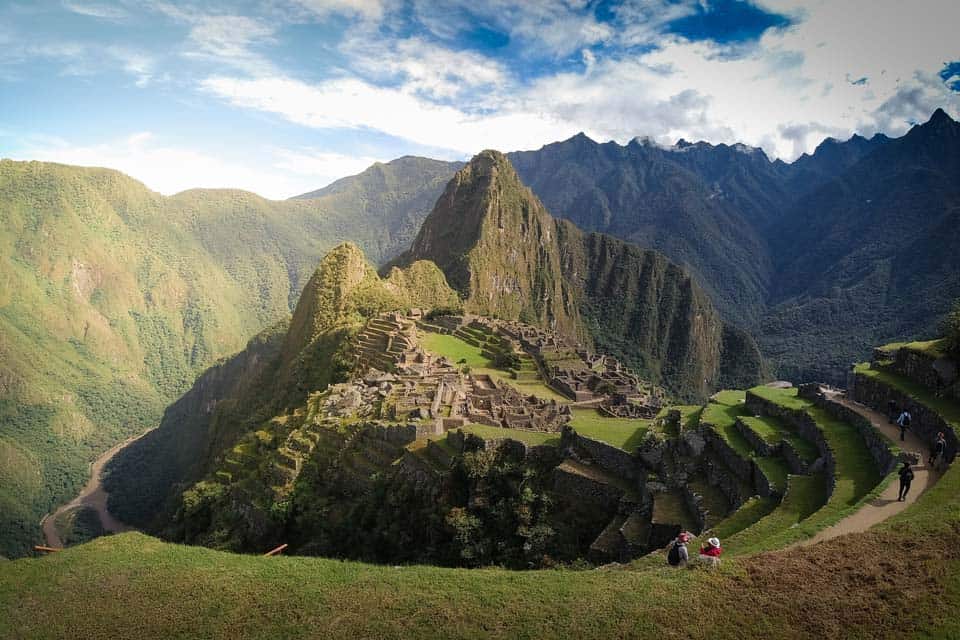
The dry season of Machu Picchu is generally considered to be winter in Peru, so in our case, it is between May to mid-September. This is the ideal time to visit Machu Picchu, but there are some things you might need to be aware of.
The first is crowds.
The dry season is also the peak season in Peru, especially between the months of May to September. Besides the incredible weather attracting crowds, summer vacations in the Northern Hemisphere bring a flock of tourists.
This means that hotels and tours are more in demand, so booking your Machu Picchu tickets might be more difficult. And because the weather is so nice, the limited Inca Trail permits during this time of the year are sold out very far in advance.
If you are visiting Machu Picchu during the dry season, make sure you do lots of planning and expect to pay a lot more for accommodations and tours.
The second thing to be aware of is the temperature.
Machu Picchu and Cusco are located very high in altitude, which means that the temperature can drop quite low at night. It is not uncommon for the temperatures to go below freezing at night or in the early mornings. In the afternoon, the temperature is usually around 70s Fahrenheit (low 20s Celcius).
Visiting Cusco before Machu Picchu? Check out our complete guide on where to stay in Cusco here!
Machu Picchu Shoulder Season
The months of mid-March to April and mid-September to October are considered Fall and Spring in Machu Picchu. These months also coincide with Machu Picchu’s shoulder season.
This is our favorite time to visit Machu Picchu. During this time, the crowd dwindles and the weather is usually not too bad, especially as it gets closer to the dry season. There are fewer visitors in Machu Picchu and the chance of you getting smacked in the face by a selfie stick decreases, which is always a nice thing.
That isn’t to say that the weather is always going to be nice. Weather during the shoulder season can be unpredictable sometimes. But we think it is worth it considering you will pay a lower price for accommodations and tours.
The Inca Trail permit is also easier to get, so this is a great opportunity for travelers to experience this epic Peru trek without lots of pre planning and lots of money.
If you have to pick between fall or spring, we recommend going for spring (mid-September to October). Because Machu Picchu is surrounded by forests and mountains, the rainy season that precedes fall can disrupt many of its services (like the train to Machu Picchu or even the hiking trails).
Fall is a time when Machu Picchu is healing from the damage incurred during the wet season.
Read More: How Many Days In Cusco To Spend?
Machu Picchu Rainy Season
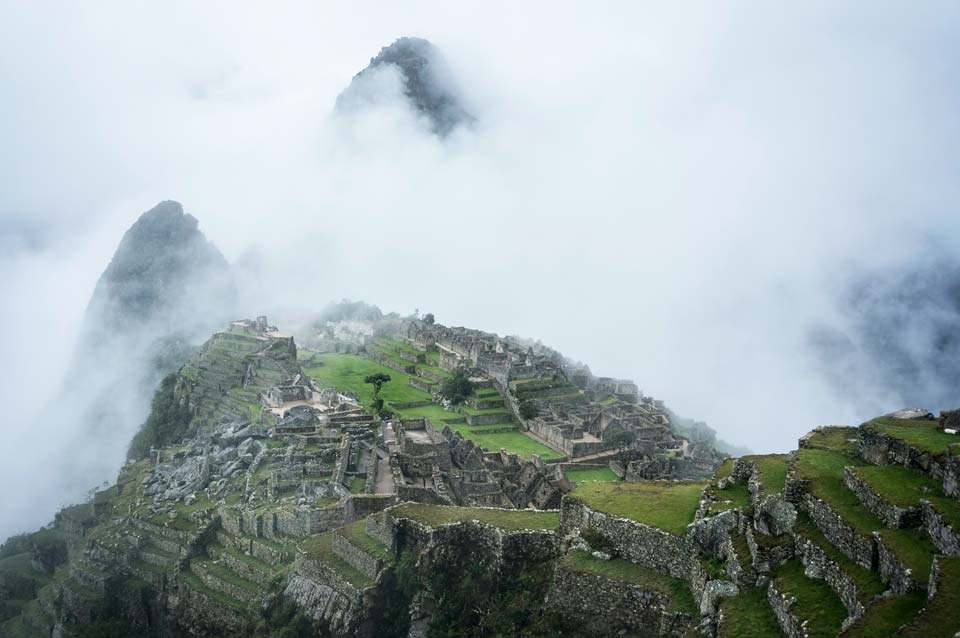
The rainy season (November to mid-March) in Machu Picchu is not a good time to visit and is considered the low season. Though the weather is at its warmest, the rain destroys some of the infrastructures that make sightseeing possible. Keep in mind that Machu Picchu is located in a cloud forest.
Landslides and floods from the Urubamba River are not uncommon, especially during the months of February and January. In fact, the Inca Trail is closed in February and it is just not a good time for hiking in Peru.
The train tracks and hiking routes to Aguas Calientes (also known as Machu Picchu town) could be inaccessible due to flooding and landslides. And if you do get there, the thick storm clouds might mean you don’t see much of Machu Picchu.
If you have decided to do any of the treks to Machu Picchu, consider lots of rain gear such as waterproof boots and a durable rain jacket.
We don’t recommend you to visit Machu Picchu during this time.
Best Time To Hike Machu Picchu
Before we jump into the best time to hike Machu Picchu, you should know that the term hiking Machu Picchu could mean different things.
You all know about Peru’s famous Inca Trail and all the Inca Trail alternatives (such as Salkantay Trek) that take you from Cusco to Machu Picchu. But did you know that there are three mountains inside the Machu Picchu archaeological site that you can climb?
They are Huayna Picchu, Machu Picchu Mountain (yes there is a mountain called Machu Picchu inside Machu Picchu archaeological site) and the newly opened Huchuy Picchu.
And lastly, there is a 1.5-hour hike from Aguas Calientes town, which is sometimes referred to as Machu Picchu pueblo (town in Spanish), to the entrance of Machu Picchu.
Inca Trail to Machu Picchu
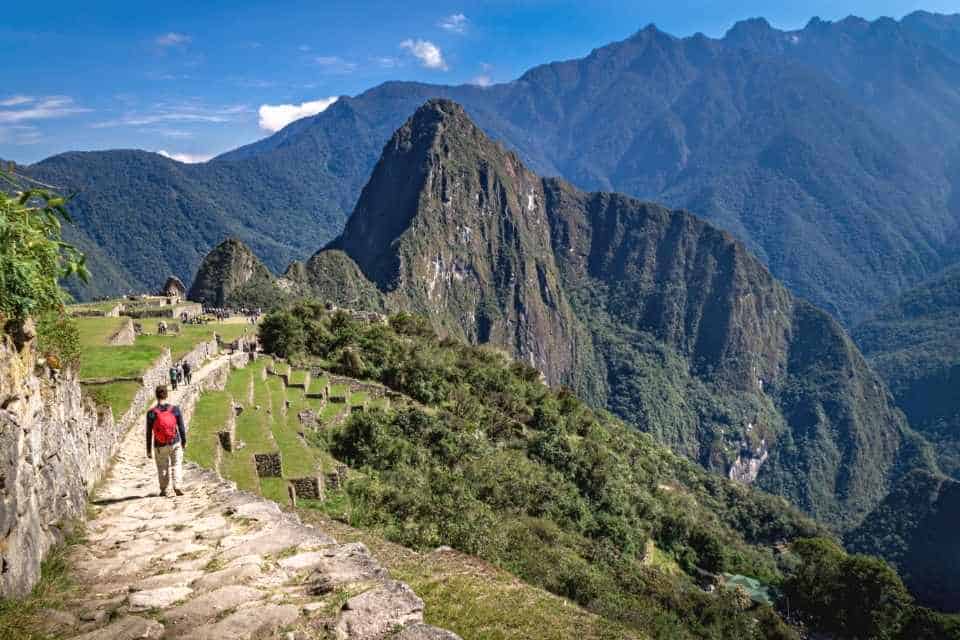
The Inca Trail to Machu Picchu is a once-in-a-lifetime experience in Peru. Visitors can take the same route that connected numerous Inca settlements in the Sacred Valley, and finally arrive in Machu Picchu’s sun gate (in the rear of Machu Picchu) on the last day.
Needless to say, this trail is popular, and only 500 permits are given per day with many of them going to the porters and chefs. Because it is so popular, getting an Inca Trail permit in the dry season costs a lot of money and requires you to purchase it far in advance (sometimes more than 6 months).
While the dry season is the best time to hike the Inca Trail, it might be difficult for budget travelers and travelers that don’t plan so far in advance.
So the alternative is hiking the Inca Trail during the shoulder season, a time when it is less in demand with some decent weather.
If you can snatch an Inca Trail pass during the dry season, definitely go for it. But if you can only get one for the shoulder season, don’t miss the opportunity.
We don’t recommend hiking the Inca Trail in the rainy season. The trail can get quite treacherous due to heavy rainfall and landslides. The Inca Trail is also closed in February for rehabilitation (and also because it rains like hell in February).
Planning on doing the Inca Trail? Make sure you reward yourself with some authentic Peruvian food afterwards!
Inca Trail Alternative Treks
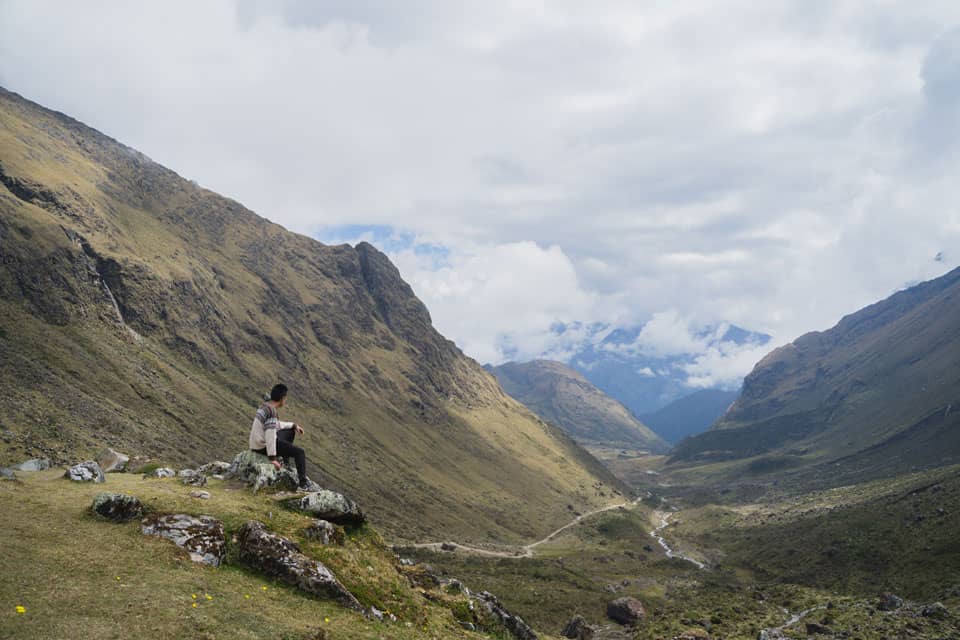
Hiking the Inca Trail alternative treks is a little different than doing the Inca Trail, simply because there is less demand. Even if you visit during the peak season, you won’t have a hard try finding alternative treks like the Salkantay Trek, Ausangate Trek, and more.
You might get a slightly better deal if you are hiking during the shoulder season, but you won’t need to reserve your hiking tours months in advance. There can be an unlimited number of hikers on those trails.
Because of those reasons, the dry season is the best time to hike the Inca Trail alternatives.
Hikes Inside Machu Picchu Archaeological Site
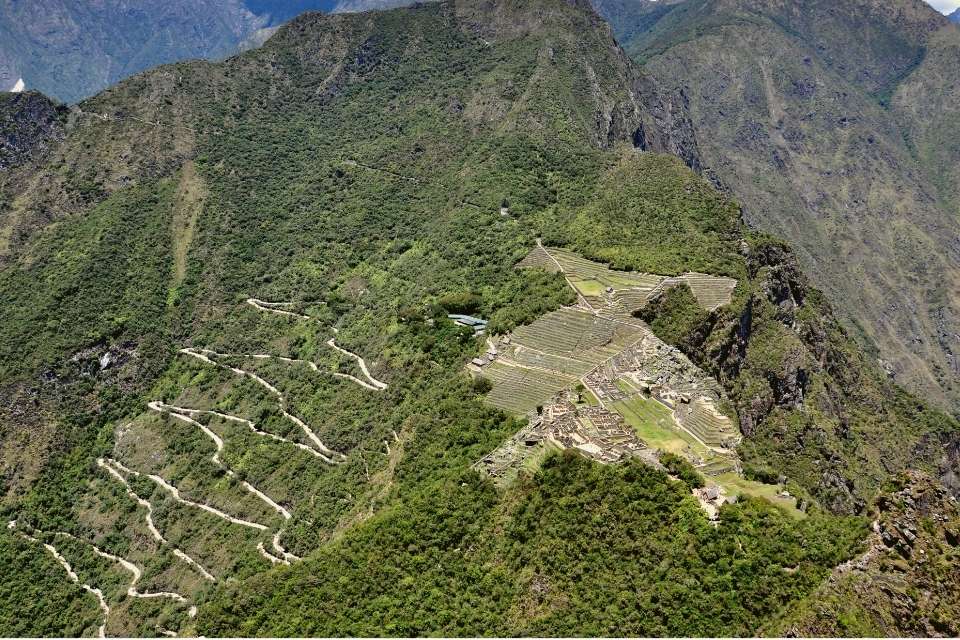
The hikes inside Machu Picchu are Huayna Picchu, Machu Picchu mountain, and Huchuy Picchu. The quality of these Peru hikes depends on the weather of Machu Picchu, so the dry season is the best time to do them.
However, similar to the Inca Trail, there is a limited number of tickets for those mountains. And if you are visiting during the peak season, you might not be able to secure them. In that case, the shoulder season could be a great alternative.
We do not recommend hiking Huayna Picchu in the wet season. The trail is narrow and steep, making it more dangerous when it is wet.
Best Time Of The Day To Visit Machu Picchu
Machu Picchu is open from 6 AM to 5:30 PM daily.
The best time of the day to visit Machu Picchu is generally 6 AM (first entry) or just before 2 PM (last entry). Those two slots are the best time of the day to avoid the crowd. If you visit at 6 AM, you have the chance to see the sunrise at Machu Picchu.
Your Machu Picchu ticket gives you a total of 4 hours inside the UNESCO World Heritage Site, and it closes at around 5:30 PM. That means if you enter Machu Picchu around 2 PM, you can stay till it closes at 5:30 PM, which gives you a chance to see the sunset.
Visiting during the middle of the day is not ideal, but it might be the only option if you have a short Peru itinerary.
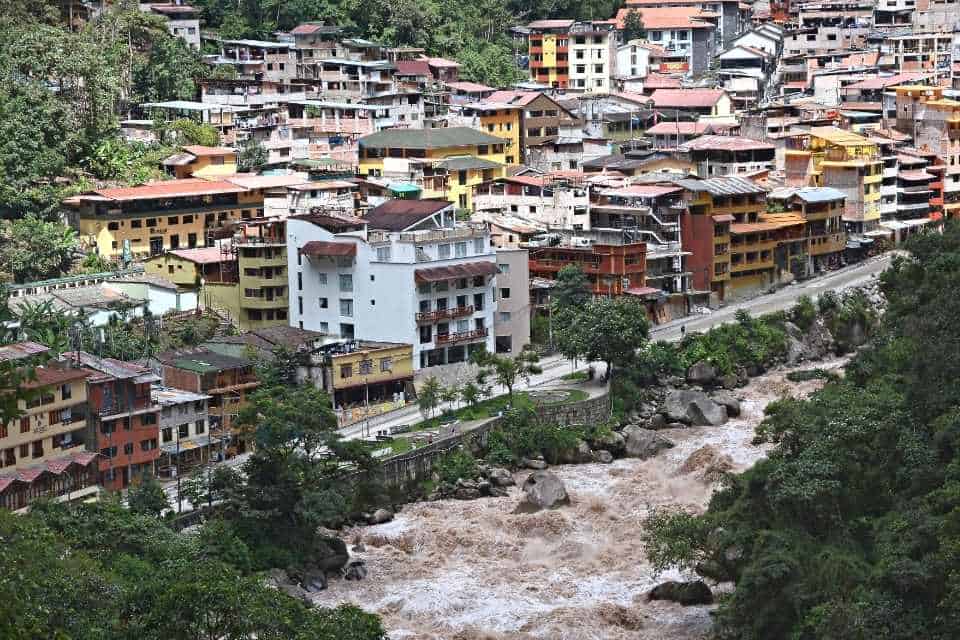
But visiting Machu Picchu at 6 AM or 2 PM will mean that you will need to either stay a night before or after in Aguas Calientes, or Machu Picchu town. This town is located a 20 minutes drive to the entrance of Machu Picchu, and there are shuttles you can take to get there. Otherwise, you can hike 2 hours from town to the entrance of Machu Picchu.
Another thing to note is that the new 2022 regulations on Machu Picchu require that you enter no later than 1 hour of the time slot that you purchased for. You must also choose one of the four circuits inside Machu Picchu. Our recommendation is circuit number 2.
📚Read More: How To Get From Aguas Calientes To Machu Picchu
Machu Picchu Weather By Month
Below we will break down Machu Picchu’s weather by month, so you can have a better understanding of its highs, lows, and average precipitation.
Machu Picchu in January
January is the heart of the rainy season in Machu Picchu. Heavy rain is not uncommon and it can sometimes rain the entire day. Hiking trails can become treacherous due to mudslides and landslides. Reconsider visiting Machu Picchu.
- Average low temperature: 8 C (46 F)
- Average high temperature: 20 C (68 F)
- Average Rainfall: 270 mm (10.6 in), 22 rainy days
Machu Picchu in February
February is right in the middle of the wet season in Machu Picchu. Though warm, there are still plenty of rain to ruin your visit to Machu Picchu. The Inca Trail is also closed during this month.
- Average low temperature: 8 C (46 F)
- Average high temperature: 20 C (68 F)
- Average Rainfall: 251 mm (9.9 in), 20 rainy days
Machu Picchu in March
The middle of March marks the beginning of the shoulder season. Rain is starting to dwindle and the Machu Picchu mountains and the areas around it start to heal from the damage caused by the rain season.
- Average low temperature: 7.5 C (45 F)
- Average high temperature: 19 C (66 F)
- Average Rainfall: 243 mm (9.6 in), 22 rainy days
Machu Picchu in April
April is the peak of the shoulder season for Machu Picchu. During this time, the weather is great to visit Machu Picchu, and you won’t run into lots of tourists.
- Average low temperature: 6 C (43 F)
- Average high temperature: 20 C (68 F)
- Average Rainfall: 150 mm (5.9 in), 20 rainy days
Machu Picchu in May
May is the beginning of the dry season in Machu Picchu. Though the temperature starts to dip at night and in the early morning, the abundance of sun keeps the day nice and warm. May is also a great time to visit Machu Picchu as the summer vacationers have not arrived yet.
- Average low temperature: 2.5 C (36 F)
- Average high temperature: 21 C (70 F)
- Average Rainfall: 71 mm (2.8 in), 16 rainy days
Machu Picchu in June
June is going into the heart of the high season. Though the cold nights can go below freezing, the day time is still somewhat warm. This is some of the best Machu Picchu weather, as you can expect clear skies and nice hiking trails. But just remember to book everything in advance because there are plenty of travelers arriving.
- Average low temperature: 2 C (35 F)
- Average high temperature: 20 C (68 F)
- Average Rainfall: 49 mm (1.9 in), 11 rainy days
Machu Picchu in July
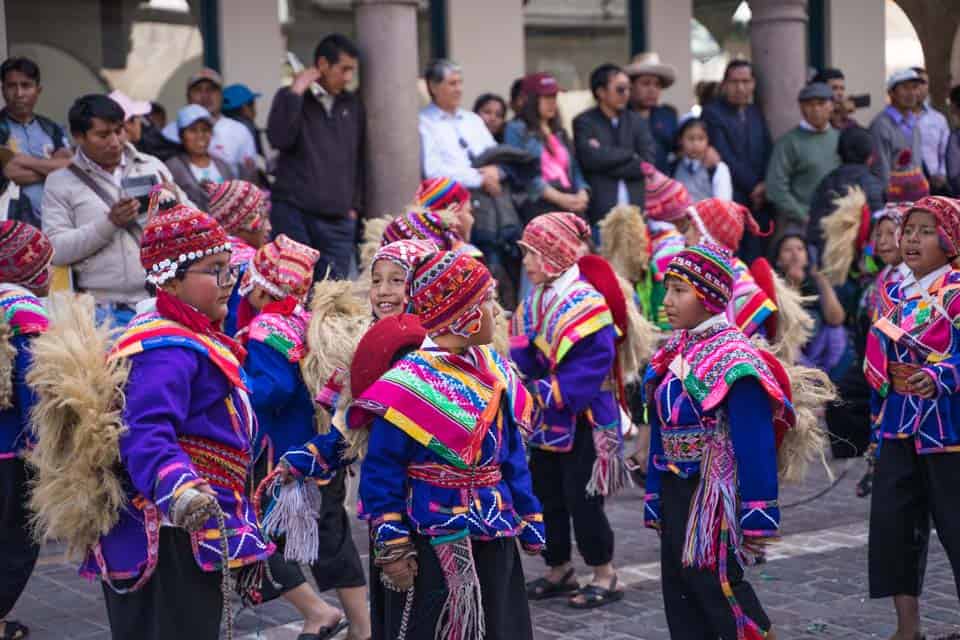
July is one of the busiest times in Peru, full of tourists looking to explore not only Machu Picchu, but Cusco and the surrounding Andes Mountains. The Inti Raymi (Sun Festival) is celebrated at the end of July, a traditional Peruvian festival that involves native outfits and lots of music and dancing. It is also one of the coldest months in Peru.
- Average low temperature: 1 C (34 F)
- Average high temperature: 21 C (70 F)
- Average Rainfall: 49 mm (1.9 in), 11 rainy days
Machu Picchu in August
August is generally considered the last month of the high season. The temperature and weather are still pleasant, perfect for hiking Huayna Picchu mountain or any treks to Machu Picchu.
- Average low temperature: 2 C (35 F)
- Average high temperature: 22 C (72 F)
- Average Rainfall: 69 mm (2.7 in), 16 rainy days
Machu Picchu in September
September marks the end of Machu Picchu’s high season. In the earlier weeks of September, sun and nice weather are still common, but just remember to pack a raincoat as you go into the later weeks of September. Summer crowds (or should I say winter crowds) have gone and this is one of our favorite times to visit Machu Picchu.
- Average low temperature: 5 C (46 F)
- Average high temperature: 22 C (68 F)
- Average Rainfall: 97 mm (3.8 in), 20 rainy days
Machu Picchu in October
October is very similar to the weather in September, except that you are likely to see a little bit more rain. The low temperatures are starting to rise as Peru enters into summer but the rainy days keep the highs manageable. Pack good rain gear if you are visiting in October.
- Average low temperature: 7 C (45 F)
- Average high temperature: 23 C (73 F)
- Average Rainfall: 155 mm (6.1 in), 22 rainy days
Machu Picchu in November
November is the official beginning of the rain season in Machu Picchu. You might still get the occasional days of sun, but generally it is recommended to prepare for rain. Bring your rain gear and keep an eye out for the weather.
- Average low temperature: 8.5 C (47 F)
- Average high temperature: 22 C (72 F)
- Average Rainfall: 186 mm (7.3 in), 21 rainy days
Machu Picchu in December
Though in the middle of the rain season, December sees an increase in tourists due to holidays like New Years and Christmas. Visiting Machu Picchu could be disappointing, but the vibrant atmosphere of cities like Lima and Arequipa will surely lighten up your vacation.
- Average low temperature: 9 C (48 F)
- Average high temperature: 20 C (68 F)
- Average Rainfall: 241 mm (9.5 in), 22 rainy days
Visiting Machu Picchu FAQs
When is the best month to go to Machu Picchu?
When is the least busy time to go to Machu Picchu?
When is the best time to hike the Inca Trail?
This concludes our guide on the best time to visit Machu Picchu. Hopefully, you will have the information you need to plan an epic Machu Picchu adventure.
Any questions? Leave them in the comments!
Disclaimer: Some of the links above are affiliate links. That means if you book or make a purchase through the links, we will earn a small commission at no extra cost to you! The money will help run this site! Thank you!
